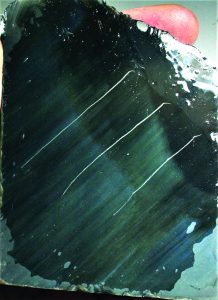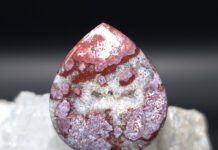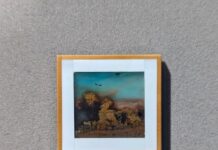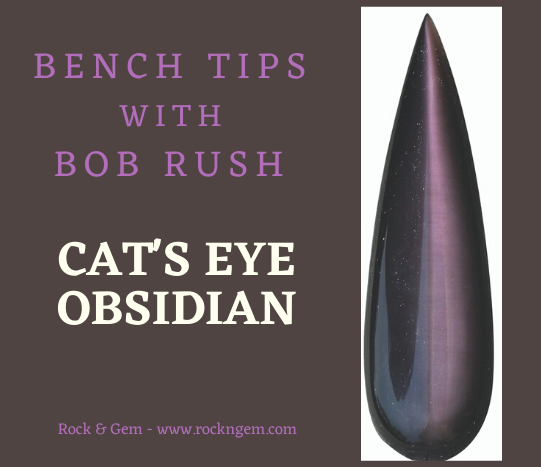
By Bob Rush
Davis Creek obsidian is a very popular lapidary material because of its availability and beautiful rainbow colors. This material comes from Modoc County, in far Northeastern California, above the small town of Alturas. Many clubs have annual field trips to this location.
Though the material from Davis Creek has beautiful color layers there is a location in the Jalisco area of Mexico that has even more brilliantly colored specimens, but in the past few years, this material has become rather scarce.
Marveling Over Multi-Colored Layers
The material from the Davis Creek location shows multicolored layers, single colors, and common colors of grey and black. The pieces range from egg size to basketball size. Not every piece exhibits bright colors, but good colored material is easy to find. The natural outer surface of the material as it comes from the earth has a frosty or sandy texture and appearance, and the fracture surfaces have a glassy appearance usually with a conchoidal shape. The material also usually reveals visible lines with varying distances between them. These lines often extend all the way around the piece and represent the color layers within the stone.
Many people cut Davis Creek obsidian at an angle of a few degrees across the lines to get the rainbow of colors, but that makes the slab show the colors only in a single direction and any slight rotation, either way, results in the extinction of the visible colors.
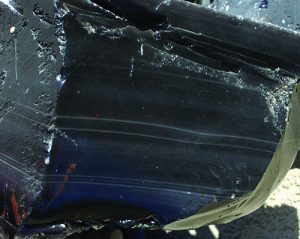 To get the cat’s eye effect, you need to cut the slab parallel to the outside indicator lines. The slab must be at least 3/8” to 1/2” thick to achieve the density needed to show the best eye effect. Anything thinner might allow light to come through the back and it will diminish the color and intensity of the eye. If it is cut too thin, you can rescue your project by adding a black backing material.
To get the cat’s eye effect, you need to cut the slab parallel to the outside indicator lines. The slab must be at least 3/8” to 1/2” thick to achieve the density needed to show the best eye effect. Anything thinner might allow light to come through the back and it will diminish the color and intensity of the eye. If it is cut too thin, you can rescue your project by adding a black backing material.
After you have cut the slab, you need to locate the color lines. To do so, hold the slab under a bright light and look for the faint parallel color filaments and mark a few of them with an aluminum marking scribe.
Layout your cab with these lines directly across the narrow dimension of the cab. You want a long narrow cab with a high dome. The higher the dome and narrower the shape will result in a brighter eye. The girdle will end up being almost vertical. Because the slab is rather thick, you will be able to cut the cab with the high profile needed to show the cat’s eye.
Using standard cabbing techniques and careful finishing and sanding will result in a very beautiful cat’s eye obsidian cab.
